
Most visitors to the South Rim of the Grand Canyon never visit the North Rim, which is a quieter and greener side of the Grand Canyon. Located in Northern Arizona, the North Rim is open seasonally and offers hiking, camping, cabins, and even mule trips. With cooler temperatures, visitors get all the views at a higher elevation along with a lot fewer people. Here are the best things to do at the North Rim of the Grand Canyon.
10 Best Things to Do at the North Rim of the Grand Canyon
-
Stop by the Visitor Center
-
Take a Scenic Drive
-
Hike along the North Rim
-
Mule Rides at the North Rim
-
Attend a Ranger Program or Special Event
-
Earn a Junior Ranger Badge
-
See the Sunset
-
Spot a Bison
-
Eat at the Grand Canyon Lodge
-
Stay in a Cabin
Grand Canyon At a Glance
| Year Established: 1919 |
| Located: Northern Arizona |
| Size: over 1,900 square miles |
| Top Features: Canyon Trails, Historic Lodges and Vista Views from Rims |
Planning Guide to the South Rim of the Grand Canyon
Top Tips to Visit the North Rim of the Grand Canyon
- The North Rim of the Grand Canyon is only open from May 15 until the end of November due to snow over the winter.
- The elevation of the North Rim is higher than the South Rim and is over 8,000 feet.
- There is one lodge at the North Rim, the Grand Canyon Lodge.
- Reservations are strongly recommended for lodging at the Grand Canyon Lodge.
- It takes over four hours to drive from the South Rim to the North Rim.
- The closest services outside of the park are 45 miles north of the North Rim at Jacob Lake, AZ.
- Hiking the 21 miles (34 km) from the South Rim to the North Rim includes a 4860 ft (1480 m) elevation loss from the South Rim to the Colorado River, followed by a 5850 ft (1780 m) elevation gain from the river to the North Rim according to the NPS.
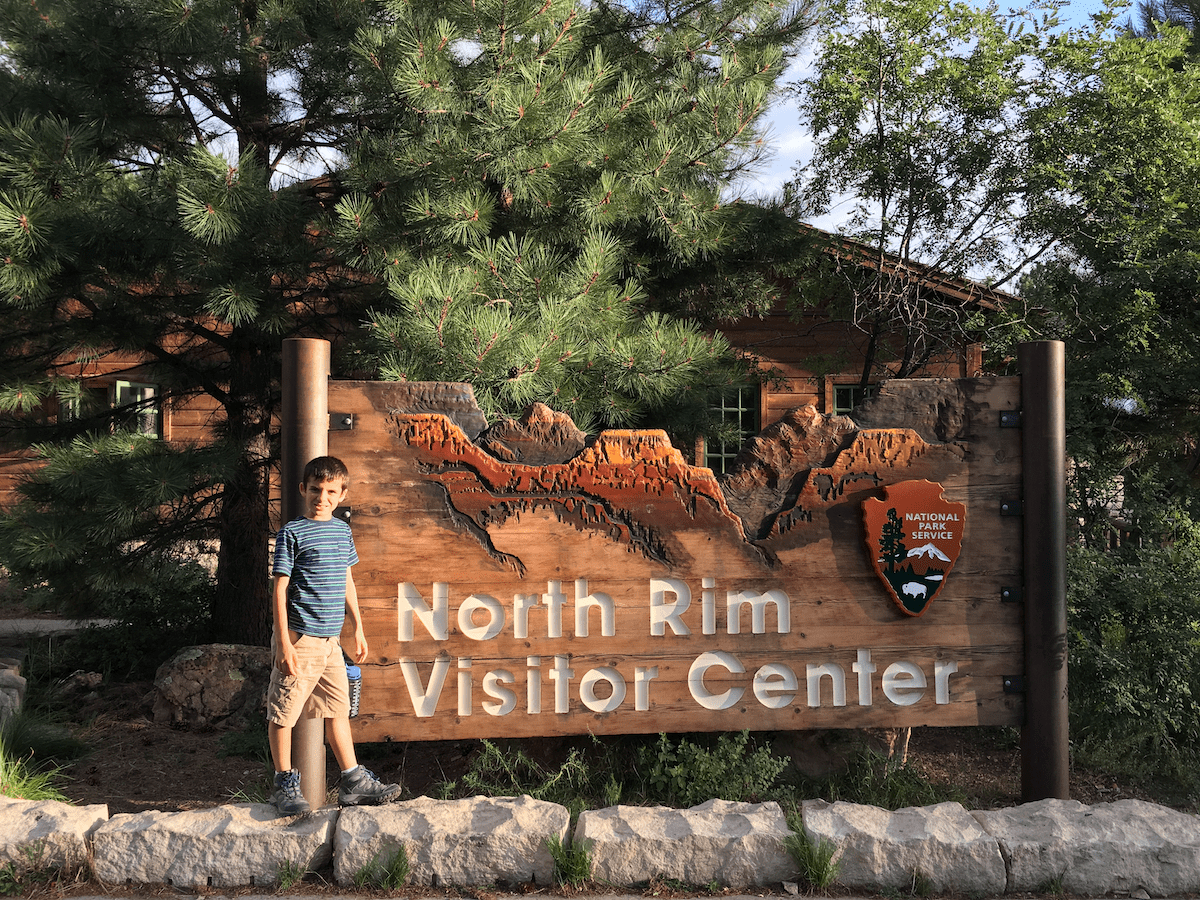
Visitor Centers at the Grand Canyon’s North Rim
North Rim Visitor Center
Located along the rim and the Grand Canyon Lodge, the North Rim Visitor Center offers maps, brochures, and Junior Ranger booklets. It also has restrooms and interpretive areas to explore. Visitors can also learn about seasonal park ranger programming.
Historic Canyon View Kiosk
Ask questions and get maps from the ranger along the rim in the log cabin kiosk.
Roaring Springs Overlook Kiosk
A park ranger is sometimes stationed at an outdoor information desk at this popular area and last stop for day hikers on North Kaibab Trail.
Scenic Drives on the North Rim
The North Rim offers several scenic drives, though vehicles over 30 feet are not allowed.
Point Imperial—Take Arizona Highway 67 to Point Imperial, about 11 miles from the Grand Canyon Lodge. Here, you can see the Painted Desert and Marble Canyon, as well as more of the eastern Grand Canyon. This area offers restrooms and is the highest point along the North Rim (8,803 ft.)
Vista Encantada—Farther along Arizona Highway 67, this area offers a picnic area.
Roosevelt Point—On the Walhalla Plateau, Arizona Highway 67 has a turnout for the Roosevelt Point Trail (.2 miles).
Walhalla Overlook—On AZ Highway 67, visit the Walhalla Ruins and the overlook.
Cape Royal—At the terminus of AZ Highway 67, Cape Royal offers a wedding site, restrooms, and picnic tables. The Cape Royal Trail is .8 miles roundtrip and offers views of the canyon, Angels Window, and the Colorado River.
Top Things to Do Around the Grand Canyon

Hiking Trails on the North Rim
Take a hike when visiting the North Rim of the Grand Canyon.
Bright Angel Point Trail—A.5-mile roundtrip hike on a paved trail to one of the best views along the North Rim.
Bridle Path—This is a 1.9-mile one-way hiking trail on a hard-packed path. It is open to leashed pets and bikes.
Roosevelt Point Trail—A .2-mile hiking trail to an overlook.
Cliff Springs Trail—A .8-mile hiking trail through a ravine to a spring.
Cape Royal Trail—A .8-mile paved trail to an overlook with canyon views, Angels Window and the Colorado River.
North Kaibab Trail—This trail heads into the canyon and is not a day hike. Overnight camping is required on this hiking trail to the Colorado River.
Biking on the North Rim
Bridle Trail between Grand Canyon Lodge and North Kaibab Trail.
All roads are open for vehicular traffic at the North Rim.
Mule Rides at the North Rim
A bucket list item for the adventurous, a Grand Canyon Mule Trip is available on the North Rim. Though unlike the Mule Trips that depart from the South Rim, North Rim rides do NOT go all the way to the Colorado River. As a bonus, riders can reserve their trips a few days in advance instead of a year (common for the South Rim mule trips).
The stable on the North Rim offers guided mule rides from May 15 until October 15. Canyon Rides offers several different rides with sure-footed and calm mules.
Guided 1-hour Rim Ride—This ride is offered four times a day. The minimum age requirement is 7. The maximum weight is 220 pounds, and prices start at $60 per person.
Guided 3-hour Rim—Using the Ken Patrick Trail, this ride travels to Uncle Jim’s Point. It is offered two times a day and has a 10-year-old age requirement with the same 220-pound weight requirement. Prices start at $120 per person.
Into the Canyon Guided 3-hour Ride—This guided ride heads down 2,300 feet into the canyon on the North Kaibab trail and reaches Supai Tunnel. It is offered two times a day and has a 10-year-old age requirement with a 200-pound weight requirement. Prices start at $120 per person.
A shuttle picks up at the Grand Canyon Lodge for all rides.
Planning Guide to Zion National Park
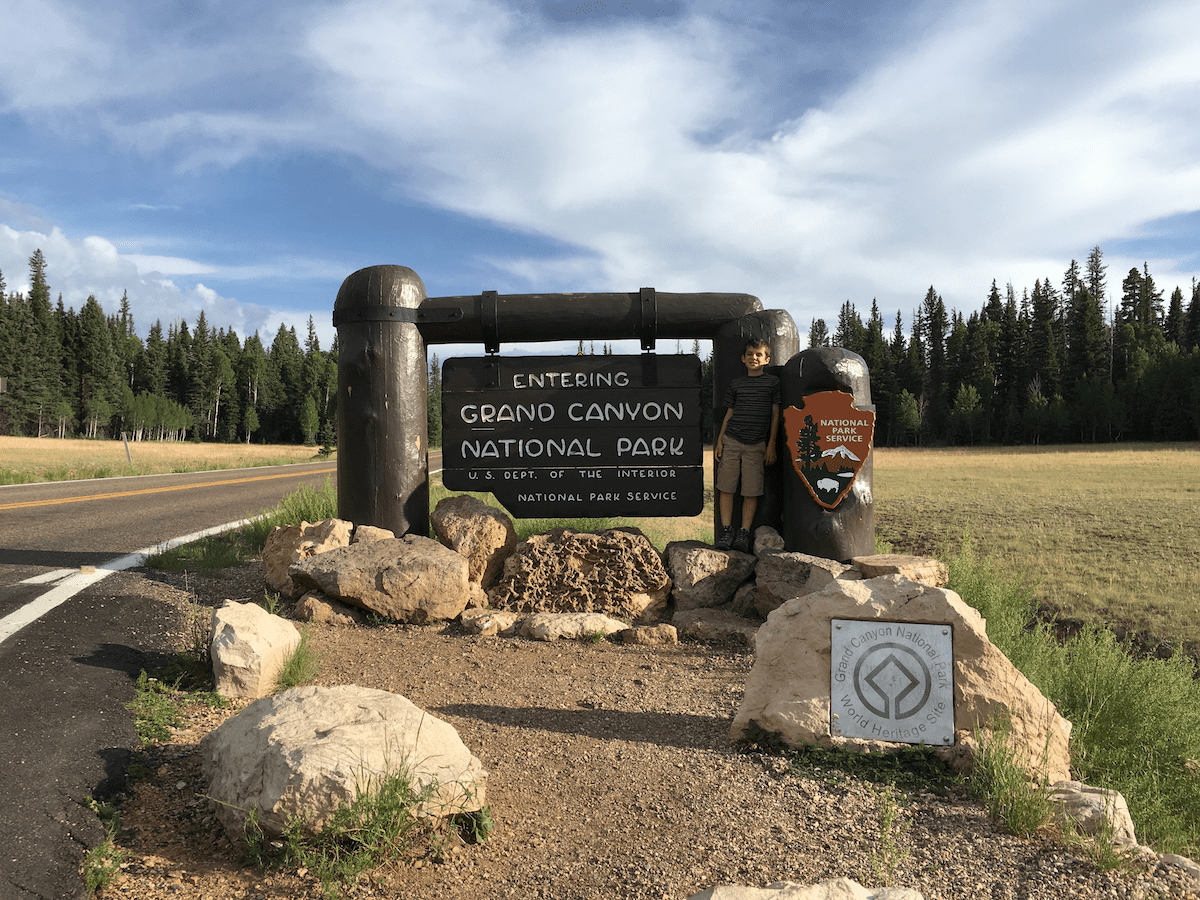
Ranger Programs and Special Events
To learn more about the North Rim of the Grand Canyon, attend a Ranger-led program. They are free and usually appeal to all ages, though look out for programming just for kids.
Popular Ranger-led Programs included Canyon View Walk, a guided walk along the rim, along with programs dedicated to the night sky.
North Rim Star Party
The North Rim Star Party features telescopes and speakers. It is June 1 to 8, 2024, at Grand Canyon Lodge in Bright Angel Amphitheater. The Saguaro Astronomy Club of Phoenix sponsors the North Rim Star Party.
Native American Heritage Days
Held in early August, learn about the cultural contributions of the 11 Native American groups who have lived around the Grand Canyon area.
Kids at Grand Canyon’s North Rim
The Junior Ranger Program is the go-to program for families to learn more about Grand Canyon National Park. It’s free and takes about two hours to complete. My kids love the badges that the park rangers present them after completing their booklets.
The South Rim and the North Rim have different booklets to complete. Each is available at Visitor Centers and Ranger Stations. The North Rim Grand Canyon Junior Ranger Program requires kids to attend a Ranger-led program.
For families headed into the canyon along one of the trails, there’s a special Junior Ranger booklet for your excursion: the Grand Canyon Explorer Junior Ranger. The Night Skies Junior Ranger badge is another easy-to-earn badge while exploring the North Rim of the Grand Canyon.
Guide to Junior Ranger Badges
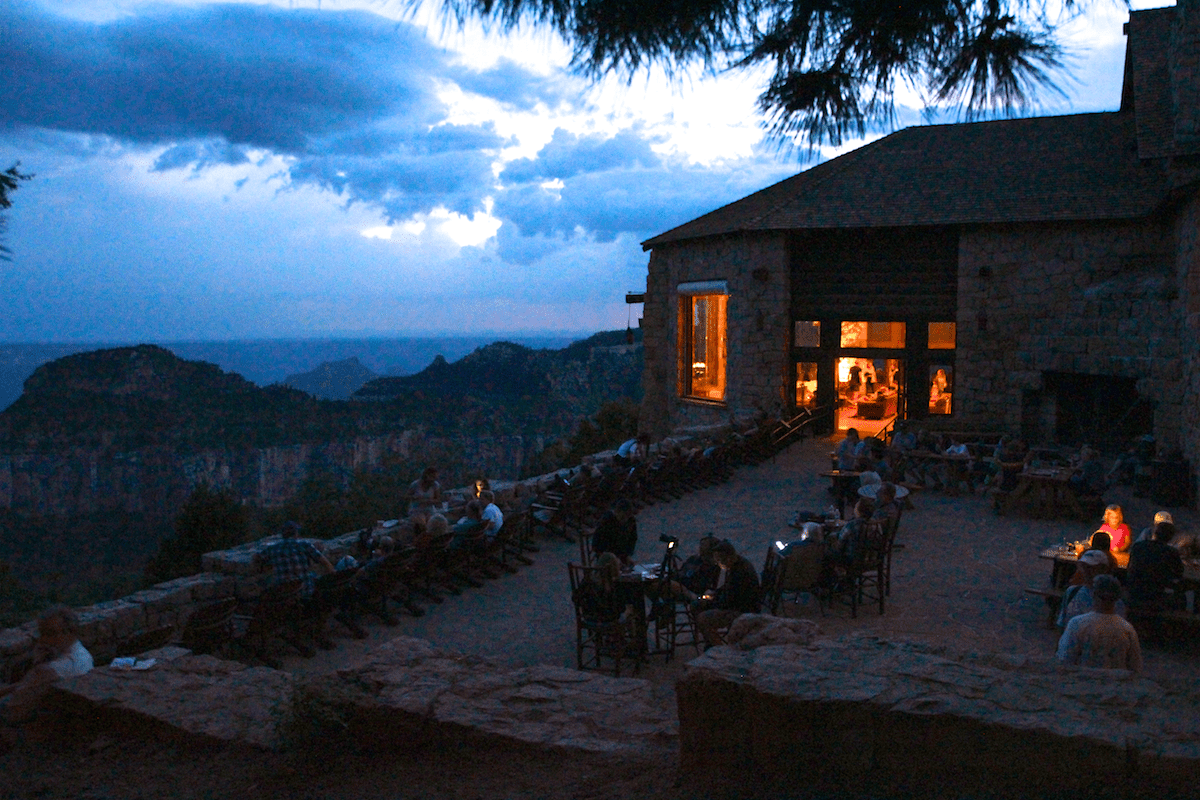
Where to see the Sunset at the North Rim
Grab a glass of wine at the Roughrider Saloon then find a rocking chair on the back patio of the Grand Canyon Lodge. Best to arrive a bit early, these are the most popular seats on the North Rim.
Bright Angel Point is another popular location to watch the sunset. It’s located near the Grand Canyon Lodge along a well-traveled trail.
Cape Royal Point offers nice views for sunrise and sunset at the end of the scenic Highway 67 in the park.
Wildlife Viewing
Find lots of animals within the park though dawn and dusk are the best wildlife viewing times. The Park Rangers can also point out areas that offer the best chance to see wildlife. The North Rim of the Grand Canyon is home to several species not seen on the South Rim, like Bison and Black Bears.
Both sides of the canyon are rich in birds, with 450 different species seen within the park. In fact, the Grand Canyon National Park is a globally important bird area.
- Big Horn Sheep
- Bats
- Bison
- Elk
- Mule Deer
- Mountain Lions
- American Black Bear
Be Bear Aware
The National Park Service recommends the following guidelines for reducing encounters.
- Make noise when hiking, kids are good at this.
- Be aware of the possibility of bears at streams.
- Store food when not eating or preparing in the bear-proof storage lockers.
- Keep 100 years between you and the bears.
- Put all trash in a bear-resistant trash container.
Planning Guide to Bryce Canyon National Park
Seasons at the North Rim
The North Rim of the Grand Canyon is wetter than the South and receives about 140 inches of snow a year. Roads are closed from December 1 until May 15. From December until March, temperatures range from lows in the teens to highs in the 30s F.
Spring weather starts in April, though snow is still possible. Temperatures warm to highs in the 50s and 60s with lows in the 30s until early June. Wildflowers start to bloom in spring and continue until Summer.
Summer temperatures remain mild with highs in the 70s and lows in the 40 until mid-September. Though late summer brings monsoon rains to the region.
Fall color starts in mid-September and runs into early October, with Quaking Aspen turning a bright yellow. High temperatures are in the 50s and 60s during this time, with lows in the 30s.

Where to Eat at the North Rim
Grand Canyon Lodge Dining Room
The hub of activity is the Grand Canyon Lodge. Inside, find its dining room, a historic space with exceptional canyon views, a soaring log ceiling, and rustic stone design features.
The dining room serves breakfast, lunch, and dinner throughout the day, and reservations are required for dinner. The menu focuses on fresh and healthy ingredients, with many organic options.
Roughrider Saloon and Coffee Shop
Opening at 5:30 a.m., this place is for early-rising hikers and sunrise watchers. It offers barista-made coffee, pastries, and breakfast burritos.
Grab a cold one starting at 11 a.m. along with an assortment of snacks. It’s the meeting spot in the evening as guests gather and retell the adventures of the day. The Roughrider Saloon closes at 11 p.m.
Deli in the Pines
Opening at 10 a.m., the Deli in the Pines offers grab-and-go hot and cold sandwiches, salads, pizza, and soups. It also offers a range of beverages and snacks. All items are served to-go and it closes at 9 p.m. daily.
Picnicking at the North Rim
Along the main road, a third of the way between the Backcountry Office and the North Rim Visitor Center, find an unnamed picnic area. Find picnic areas at Vista Encantada, Cape Royal parking area and Point Imperial.

Where to Stay on the North Rim
The original lodge, designed by Gilbert Stanley Underwood using native materials, was built in 1928. However, that structure was lost to a fire, and the current Grand Canyon Lodge was built in its place in 1937.
Grand Canyon Lodge
The main lodge building features a dining room, sunroom, and two terraces overlooking the canyon. Lodging at the North Rim consists of historic freestanding log cabins and two buildings with motel-type rooms.
Motel Rooms near Bridle Path
Located in two buildings, each room offers one queen bed and a bathroom with a shower. Each unit features a mini-fridge and a shower.
Cabins at the North Rim
Enjoy a historic cabin close to the rim (and some offer rim views). Walk to the Grand Canyon Lodge for dinner and watch the sunset.
Western Cabins
The Western Cabins feature two queen-sized beds and front porches to enjoy the view. The cabin features a full bathroom with a tub, ceiling fan, and mini-fridge.
Pioneer Cabins
The Pioneer Cabins feature two bedrooms and bedding for six people. They also include a bathroom with a shower only, a mini-fridge, and a ceiling fan. Enjoy the rustic charm of a log cabin exterior.
Frontier Cabins
For smaller groups, the Frontier Cabins offer one room with a full-size bed and a twin to accommodate three people. The cabins also feature a bathroom with a shower, though no mini-fridge. They also have a ceiling fan and a log exterior.
Lodging on the North Rim opens in mid-May and closes for the season in mid-October. As a popular destination, make reservations well in advance.
Note that none of the lodging at the Grand Canyon’s North Rim offers air-conditioning, but the room features telephones with spotty cell phone coverage.
The lodge offers its guests a complimentary shuttle to the Kaibab Trailhead twice a day.
Top National Park Lodges
Camping at the North Rim
North Rim Campground
- Seasonal from mid-May to October 31
- Reservations only
- 87 sites, no RVs
- Potable water with flush toilets
- No Showers
- Seasonal Dump Station
You can find a general store in the area with self-serve laundry, showers, picnic and camping supplies, and gas for sale.
History of the Grand Canyon
The Colorado River carved out the Grand Canyon, which measures 18 miles wide, one mile deep, and 277 river miles long. Human artifacts dating back 12,000 years have been discovered in the Grand Canyon.
The Grand Canyon became a national park in 1919, though it was protected as a Forest Reserve in 1893. On the North Rim, Gilbert Stanley Underwood designed the Grand Canyon Lodge using local materials. It was completed in 1928 but burned and rebuilt in 1937. He also designed lodges at Zion National Park and Bryce Canyon National Park.
The Civilian Conservation Corps worked in the Grand Canyon during the 1930s. They worked on improving the trail and the trails to the bottom of the canyon.
The People of the Grand Canyon
People have lived in and around the Grand Canyon for thousands of years. Artifacts, from pictographs to hunting points, continue to be discovered.
In more recent times, 11 Native American groups have lived in the Grand Canyon area. During your visit learn diverse arts and culture as well as hear the first-voice interpretation of the Grand Canyon area at the Desert View Inter-tribal Cultural Heritage Site (under construction during summer 2022).
The Civilian Conservation Corps
A group of young men arrived at the Grand Canyon in 1933. Part of President Roosevelt’s Works Progress Program, the Civilian Conservation Corps worked on conservation projects across the U.S.
During their tenure, the men of the CCC worked on the trails on the North Rim of the Grand Canyon. They constructed the Colorado River Trail at the bottom of the canyon. In 1935, the Trans-Canyon Telephone Line connected the North Rim to the South Rim.
Getting to the North Rim of the Grand Canyon
The North Rim of the Grand Canyon is about 57 miles southeast of Fredonia along Arizona State Highway 67. From December until mid-May, the Highway is closed from Jacob Lake.
Driving from the south rim to the north rim required a 220-mile drive that takes a minimum of four hours.
It is open 365 days a year and 24 hours a day. Admission is $35 per vehicle for a 7-day pass, or you can use an America the Beautiful annual pass ($80).
Altitude Sickness
Anytime you go above 8,000 feet, you can experience Altitude Sickness. Look for the following symptoms. If can effect anyone, regardless of age or health.
- Headache
- nausea
- dizziness
- vomiting
- fatigue
- shortness of breath
- loss of appetite
- trouble sleeping
Over-the-counter medications can help and symptoms should improve in 24 or 48 hours. Though if symptoms don’t improve or get worse, consult a medical attention.
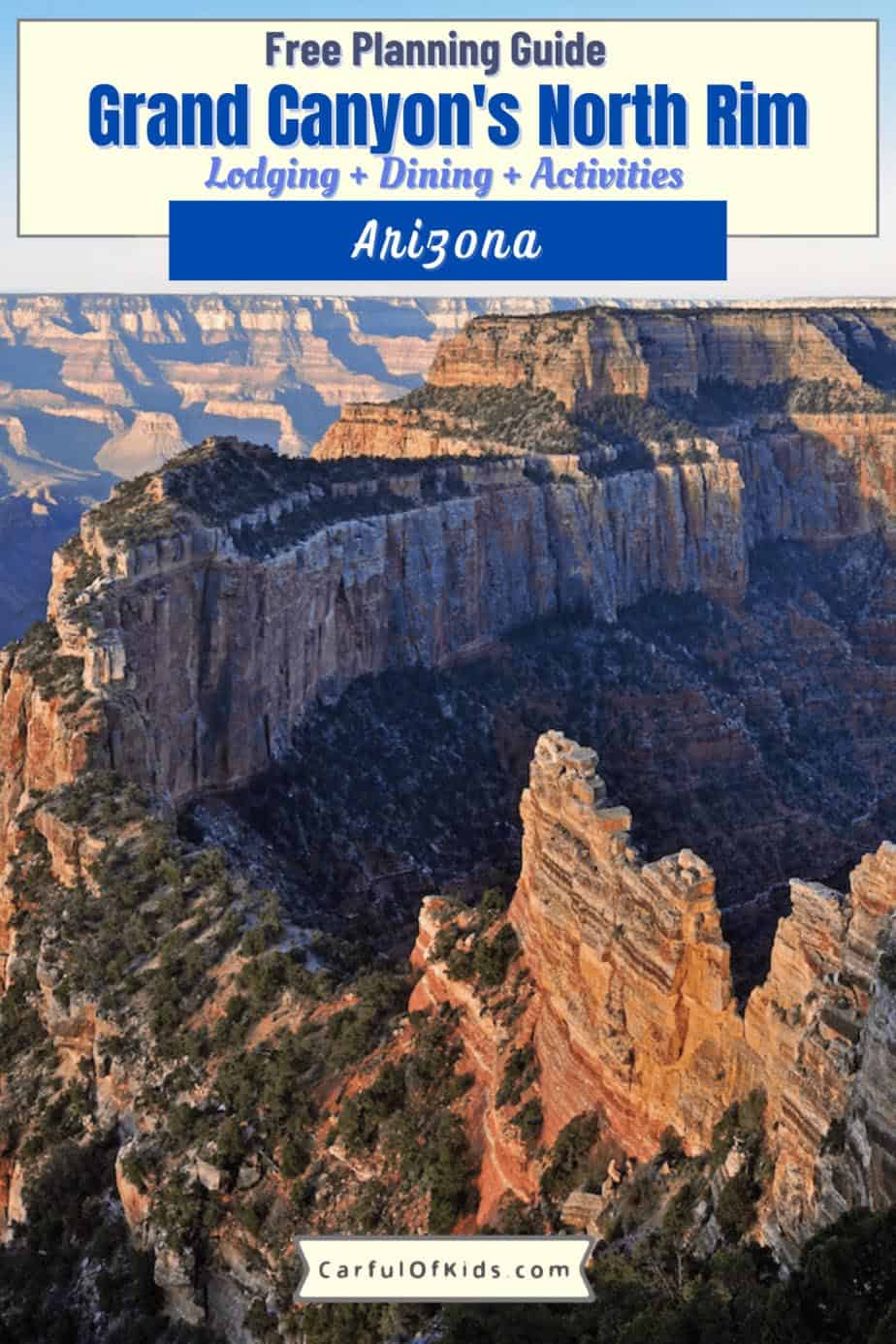

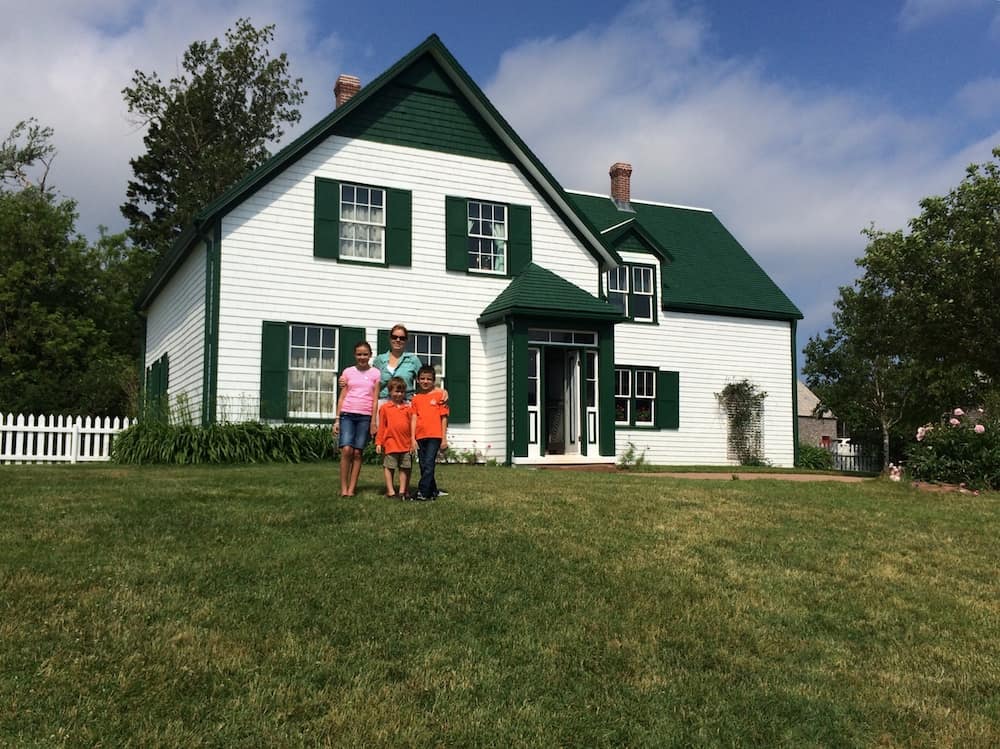
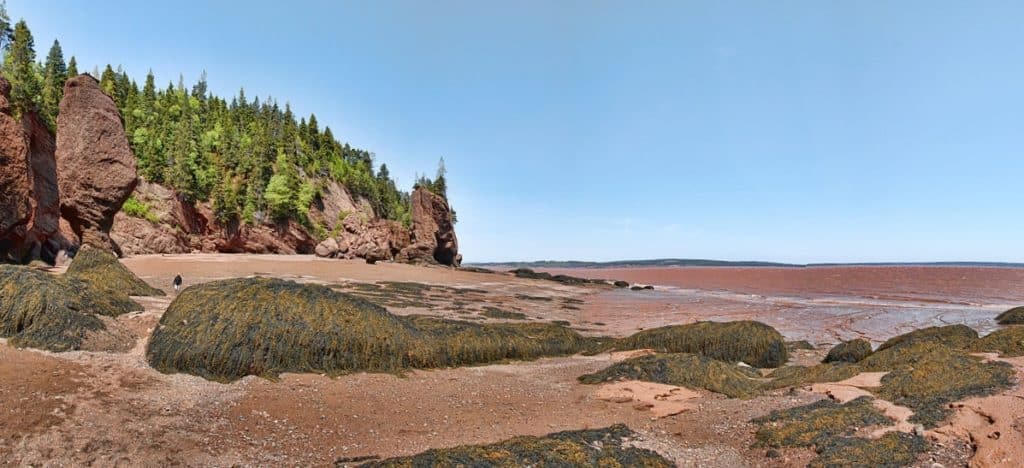
Comments are closed.